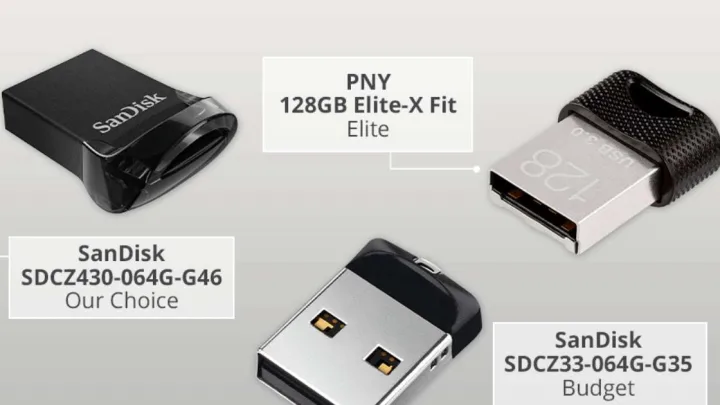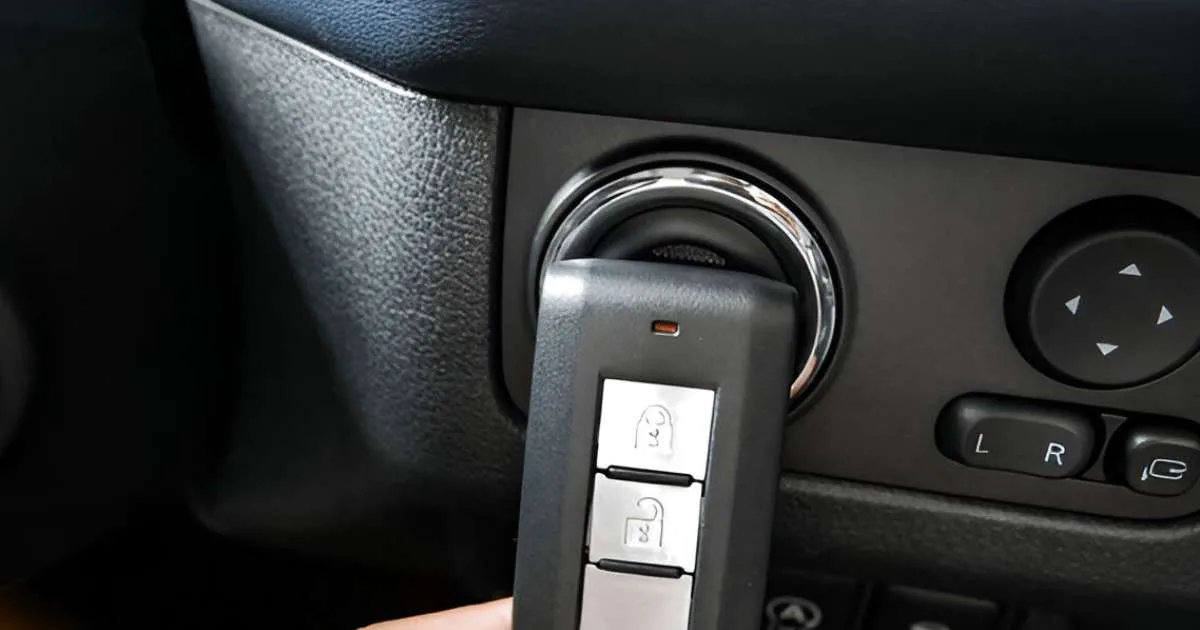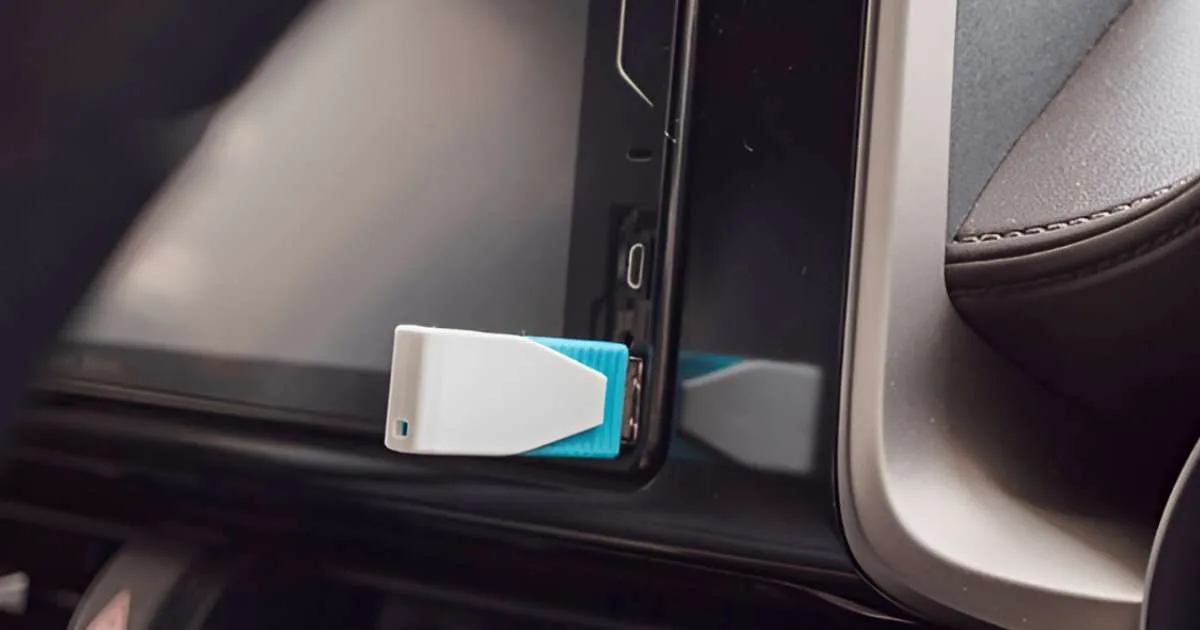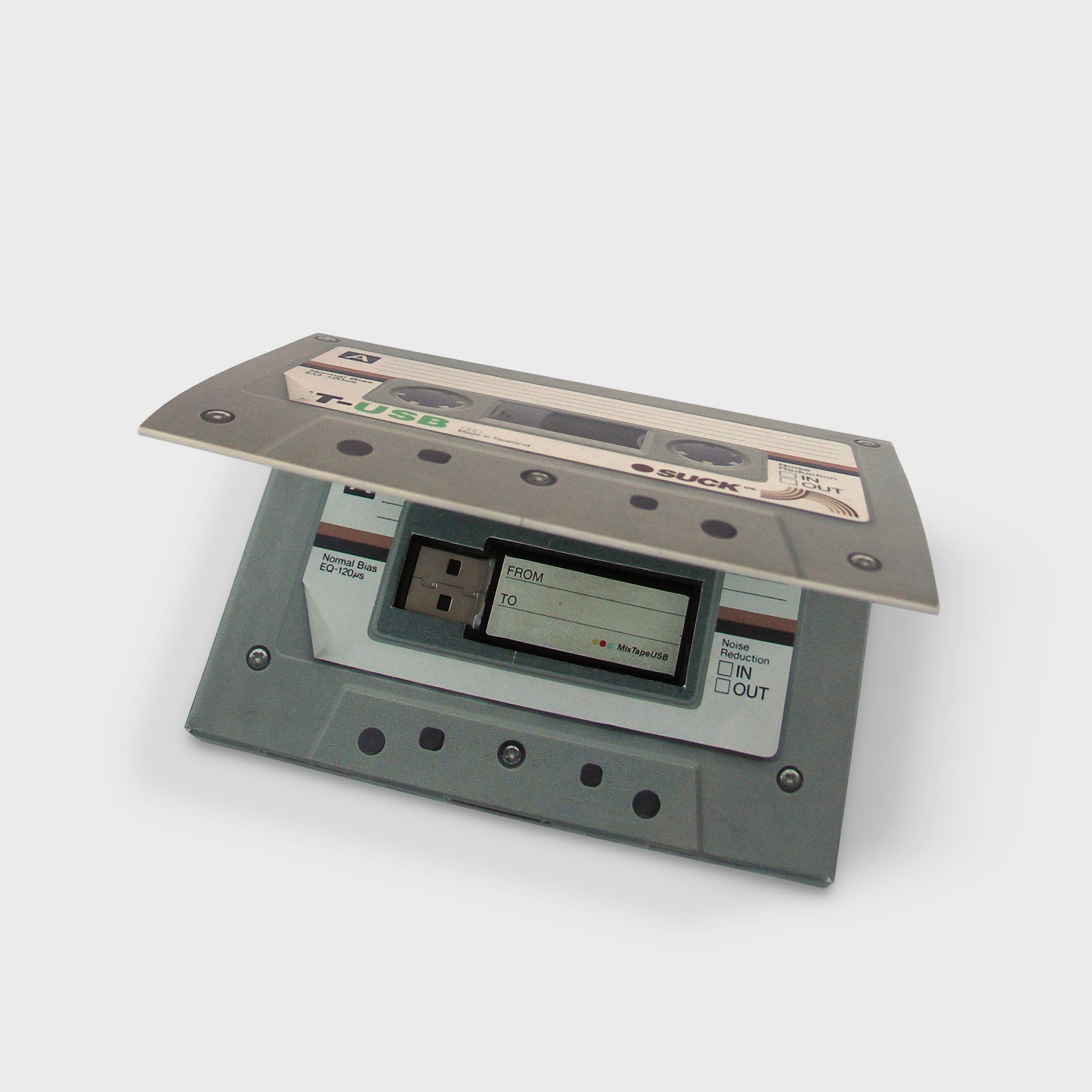
Maximize your usb stick for music in car potential by choosing high-quality files and organizing them efficiently. Ensure compatibility with your playback device for seamless audio experiences.
USB music sticks are an excellent way to carry your favorite tunes with you wherever you go. They're portable, durable, and have ample storage for extensive music libraries. To fully enjoy your music collection on-the-go, it's essential to understand how to optimize your USB stick.
Selecting the right file format can significantly enhance sound quality, while properly organizing your music files ensures easy navigation and playback. With most modern cars and audio systems supporting USB input, your music stick becomes a versatile companion for road trips, parties, or personal listening sessions. Stick to a well-structured file system, and you're sure to have instant access to your songs, making your listening experience as enjoyable and hassle-free as possible.
Introduction To Portable Music
Remember the days of bulky cassette players and large CD cases? Now, we enjoy entire music collections in our pockets. The transformation from physical formats to digital files has revolutionized how we access and enjoy music. Portable music devices have evolved, becoming more compact and offering more storage. USB music sticks exemplify this evolution, packing thousands of songs into a tiny device.
The Evolution Of Music Storage
Gone are the days of vinyl and tapes. Music storage has seen a dramatic shift. First, CDs made music crystal clear. Then, MP3 players shrunk our libraries. Today, USB sticks offer vast storage in a tiny package. Let's explore this journey:
- Vinyl Records: The classic start, but not portable.
- Cassette Tapes: Smaller, yet with limited quality and space.
- Compact Discs (CDs): Improved quality, still bulky.
- MP3 Players: Digital leap, pocket-sized convenience.
- USB Sticks: Ultimate portability, massive storage.
Benefits Of Usb Sticks For Music Lovers
USB sticks offer music enthusiasts a list of perks:
| Benefit | Description |
|---|---|
| Compact Size | Easily fits in pockets, purses, and cars. |
| Storage Capacity | Holds thousands of songs in one place. |
| Compatibility | Works with many devices like cars and laptops. |
| Durability | Resistant to scratches and drops. |
| Easy Sharing | Swap music with friends in seconds. |
USB sticks are a music lover's dream. They are small, yet hold vast music libraries. They connect to various devices and withstand daily wear and tear. Sharing playlists is also simple. With USB sticks, your favorite tunes are always at hand.
 Choosing The Right Usb Stick
Choosing The Right Usb Stick
Choosing The Right Usb Stick
Choosing the Right USB Stick is essential for your needs. This guide helps you pick the perfect one for enjoying music.
Storage Capacity Considerations
First, think about how much music you want to store. Different USB sticks have different storage sizes. Here's a simple guide:
- 4GB - Good for a few albums or playlists.
- 16GB - Holds several albums and playlists.
- 32GB+ - Best for large music collections.
Choose a size that fits your music needs. Remember, more storage means more songs.
Durability And Build Quality
Next, consider how sturdy your USB stick is. You want one that lasts long.
Look for these features:
- Metal casing - Protects against drops and damage.
- Water-resistant - Keeps your music safe from spills.
- Shock-proof - Ensures your data stays intact.
Good build quality keeps your music safe. Pick a durable USB stick.
Formatting Your Usb For Optimal Performance
Formatting Your USB for Optimal Performance is crucial. It ensures your music stick works well with your devices. A well-formatted USB stick can lead to faster access and better organization of your music files. Let's dive into the best ways to format your USB stick.
File System Types And Compatibility
Choosing the right file system is important. Different systems work with various devices.
- FAT32: Works with most devices. It has a 4GB file size limit.
- exFAT: No file size limit. Good for large files.
- NTFS: Ideal for Windows. Not great for Mac without extra software.
For music sticks, exFAT is often the best choice. It's compatible with many devices and handles large files well.
Step-by-step Formatting Guide
Follow these steps to format your USB stick:
- Plug your USB stick into the computer.
- Open 'This PC' on Windows or 'Finder' on Mac.
- Right-click on the USB drive icon.
- Select 'Format' from the menu.
- Choose your file system. exFAT is recommended.
- Tick the 'Quick Format' option.
- Click 'Start' and wait for the format to complete.
After these steps, your USB stick will be ready to use!
| File System | Max File Size | Compatibility |
|---|---|---|
| FAT32 | 4GB | Most devices |
| exFAT | No limit | Many devices |
| NTFS | No limit | Windows |
Remember, formatting erases all data. Always back up your music files first.

Credit: www.amazon.com
Organizing Your Music Library
Let's talk about organizing your music library on a USB stick. A neat collection means more time enjoying tunes and less time searching.
Creating A Logical Folder Structure
Start with a clean slate. A well-planned folder structure saves time. Think of your USB stick as a mini-library. Your main folders are like genres or artists.
- Genres: Group songs by genre for mood-based playlists.
- Artists: Create an artist folder for favorite singers or bands.
- Albums: Dedicate folders to specific albums you love.
- Years: Organize music by the year of release for a nostalgia trip.
Subfolders help too. For instance, an artist's folder can have album subfolders.
Naming Conventions For Quick Access
Names are key. They guide you to the right track fast. Use clear, simple names for files and folders.
| Folder Name | File Name Example |
|---|---|
| Beatles | 01 - Hey Jude.mp3 |
| 80s Hits | 01 - Michael Jackson - Thriller.mp3 |
Stick to a pattern. Start with track number for order. Add the song title next. Include artist name in compilations.
Use dashes or underscores for spaces. This prevents errors across different systems.
 High-quality Music Files
High-quality Music Files
High-quality Music Files
For music lovers, high-quality music files are essential. They ensure the best listening experience on your USB music stick. Let's explore how to make the most of it.
Understanding Different Audio Formats
Different audio formats affect music quality. Know these formats:
- MP3 - Common but compresses files, losing some quality.
- FLAC - Higher quality, no loss in sound. Bigger file size.
- WAV - Uncompressed, top quality. Files are large.
- AAC - Better than MP3, used in iTunes and YouTube.
Choose FLAC or WAV for the best sound on your usb stick for music in car.
Sources For High-resolution Music
Find high-quality music here:
- Online Music Stores - Sites like HDtracks offer high-resolution music.
- Streaming Services - Some, like Tidal, offer FLAC files.
- Artist Websites - Bands often sell FLAC or WAV files directly.
Using these sources, you'll enjoy the best music on your USB stick.

Credit: www.suck.uk.com
Creating Playlists For Every Occasion
USB music sticks are fantastic for carrying your favorite tunes. They're small, portable, and have plenty of space for all your songs. To make the most of your USB stick, create playlists for different moments. Imagine having the perfect soundtrack for every part of your day!
Tools For Crafting The Perfect Playlist
To start, you need the right tools. There are several free and paid programs to help you. Some popular ones include iTunes, Windows Media Player, and Spotify. These programs let you drag and drop songs into new playlists. You can also try apps like Playlist Maker or apps on your phone.
- iTunes: Great for Apple users.
- Windows Media Player: Built into Windows systems.
- Spotify: Offers playlist creation and sharing.
Sharing Playlists With Friends
After creating your playlists, share them with friends! This is easy with streaming services. For USB sticks, it's a bit different. First, ensure your music files are legally shareable. Next, copy the playlist folder onto their usb stick for music in car. You can also use cloud storage links to share your tunes.
- Check if your music can be shared.
- Copy the playlist to another USB stick.
- Or, use a cloud service for sharing.
Remember, keep your playlists organized. Name them clearly. This way, you'll always find the right vibe for any situation.
Enhancing Playback On Different Devices
Enhancing Playback on Different Devices ensures your USB music stick works everywhere. Music lovers want seamless play in cars, on computers, and home systems. Learn to maximize your stick's potential. Compatibility and troubleshooting are key.
Compatible Audio Players For Cars And Home Systems
Not all USB sticks work with every player. Check your device's manual first. Use the right format for your music files. MP3 and WAV are widely accepted. For best results, use a high-quality usb stick for music in car.
- Car systems: Most modern cars support USB playback. Ensure your stick is FAT32 formatted for best compatibility.
- Home systems: From smart TVs to stereo systems, check for a USB port. Your stick should be plug-and-play.
Troubleshooting Common Playback Issues
Playback issues can be frustrating. Follow these steps to fix common problems:
- Check the USB stick for damage. Look for cracks or broken parts.
- Ensure your audio files are not corrupted. Try playing them on a computer.
- Format your USB stick correctly. FAT32 is the most compatible format.
- Update your device's firmware. This can solve many playback problems.
- Check your device's manual for USB specifications. Some only support certain sizes or brands.
If problems persist, consider a different USB stick. Sometimes, devices are picky with brands or models.
 Choosing The Right Usb Stick
Choosing The Right Usb Stick
Maintaining Your Usb Stick
USB music sticks offer a convenient way to carry your favorite tunes with you. But to keep your music playing smoothly, proper maintenance is key. Let's explore essential tips to ensure your USB stick remains in top condition.
Regular Cleaning And Care
Clean your USB stick regularly to avoid dust and debris build-up. Use a soft, lint-free cloth to gently wipe the exterior. For tougher grime, slightly dampen the cloth with water.
Avoid using harsh chemicals or abrasive materials. They can damage the stick's surface and internal components. Keep your USB stick dry and at room temperature. Extreme temperatures can harm the device.
Protecting Your Music Data From Loss
Back up your music files often. Use cloud storage or an external hard drive for an extra copy. This way, you won't lose your collection if the stick fails.
Consider using antivirus software to scan your usb stick for music in car. It helps prevent malware from corrupting your music files. Always eject your USB stick safely from computers. This prevents data corruption.
By following these maintenance tips, your USB music stick will stay reliable for years to come.
Advanced Tips And Tricks
Welcome to the world of advanced USB music stick tips and tricks. Elevate your music experience with these expert insights. Unlock new possibilities with your device. Let's dive into some creative ways to enhance your music listening journey.
Automating Music Transfers
Automating music transfers saves time and simplifies your life. Use software to sync your favorite tracks automatically. Popular programs like iTunes and Windows Media Player offer built-in features. They detect your USB stick and sync music without manual input. Set up playlists to transfer specific songs or albums. Your music collection updates seamlessly each time you connect your USB stick.
Customizing Usb Icons And Labels
Personalize your USB stick with custom icons and labels. It helps you identify your device quickly. Follow these steps:
- Create an icon: Design or download a .ico file that represents your music taste.
- Modify your USB properties: Place the icon file on your USB stick.
- Edit the autorun.inf file: Add lines to reference your custom icon. Your USB stick will now display your personal icon.
Label your USB stick using your computer's properties menu. Choose a name that reflects its contents. This step ensures quick recognition across devices.

Credit: www.flashbay.com
Conclusion: The Future Of Music Portability
The future of music portability is bright and ever-evolving. With technology advancing, we see new ways to enjoy our favorite tunes. Let's dive into what's next for music lovers.
Emerging Technologies In Music Storage
As technology grows, so do our options for storing music. We now have cloud storage, high-capacity microSD cards, and wireless streaming services. Yet, the usb stick for music in car remains a reliable choice for many. It's simple, portable, and doesn't need the internet. New tech like lossless audio formats and USB-C offer better sound and faster transfers. Soon, we might see USB sticks that can connect directly to smartphones and other devices without adapters.
- Cloud Storage: Access music anywhere with an internet connection.
- MicroSD Cards: Small but can hold lots of songs.
- Wireless Streaming: Listen without downloading songs first.
The Continuing Role Of Usb Sticks In Music
Even with new options, USB sticks won't go away. They're easy to use, work with many devices, and are great for sharing music. In places with slow internet, they're very helpful. Also, for DJs and music producers, USB sticks are key tools. They're durable, can hold lots of music files, and are easy to carry.
| Feature | Benefit |
|---|---|
| Portability | Take your music everywhere. |
| Compatibility | Works with many devices. |
| Durability | Lasts a long time. |
In the end, the USB stick will stay a friend to music fans. It complements emerging tech, offering a bridge between the old and new. As we look forward, the mix of tradition and innovation will shape music portability. The USB stick, with its reliability and ease of use, will continue to play a significant role.
Frequently Asked Questions
How To Maximize Usb Stick Storage?
To maximize storage, use a file compression tool before transferring files to your usb stick for music in car. Choose efficient formats like MP3 for audio. Regularly clean out unnecessary files and use disk cleanup software to remove hidden data.
Can Usb Sticks Hold High-quality Music Files?
Yes, USB sticks can hold high-quality music files such as FLAC or WAV. However, these formats take more space than MP3s, so ensure your USB has sufficient capacity. High-quality files offer better sound fidelity, especially on advanced audio systems.
What Is The Lifespan Of A Usb Music Stick?
A USB music stick typically has a lifespan of 10,000 to 100,000 write cycles. Proper care, such as ejecting it safely and avoiding extreme temperatures, can help extend its lifespan. The actual longevity also depends on the frequency and manner of usage.
How To Protect Music Files On A Usb Stick?
Protect your music files by encrypting your USB stick or using password protection software. Regularly back up your files to a computer or cloud service. Keep the USB in a safe, dry place to prevent physical damage.
Conclusion
Maximizing the utility of your USB music stick is simpler than you might think. By following the tips shared, you can enhance your listening experience significantly. Remember, the right formatting and organization make a world of difference. So, dive into your music collection and let your usb stick for music in car unlock a world of auditory delight.
Disclosure
Some links may be affiliate links. That means we may earn a small commission at no extra cost to you.